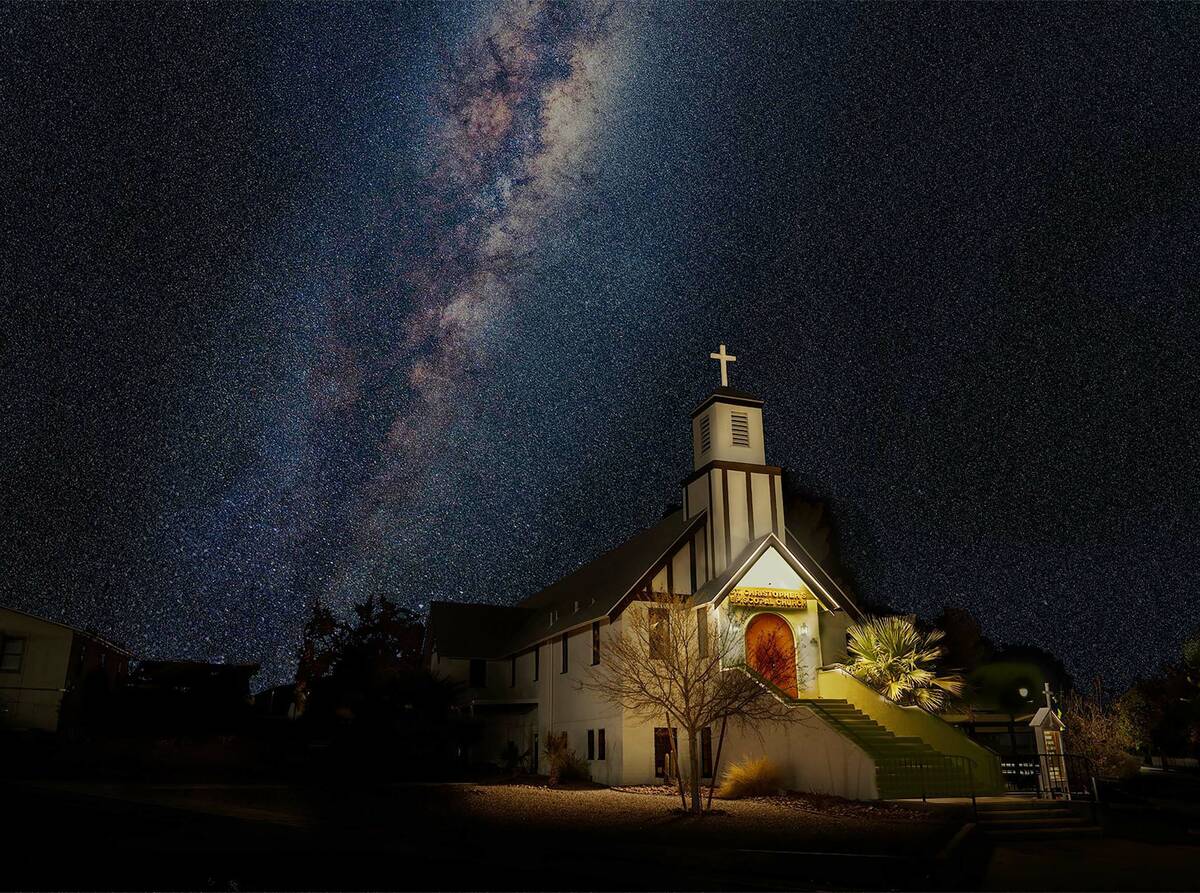City continues dark-sky initiative
When driving around town, some may have noticed that many of the city’s street lights have a different look to them.
It’s not by accident.
The city has taken steps in the last few years to find ways to reduce light pollution, while at the same time allowing those who enjoy stargazing to have an easier time of doing so.
According to a city report, in 2023, Boulder City received a $1.9 million grant from the U.S. Economic Development Authority (EDA) to retrofit every municipal light with energy-efficient, light-pollution reducing fixtures. The city and the Nevada Division of Outdoor Recreation learned about the grant in September 2022.
“In addition to providing significant energy cost savings for the city of Boulder City, the new dimmable, eco-friendly light fixtures will help curb harmful greenhouse gas emissions, protect natural ecosystems and native wildlife from critical light pollution impacts, and advance sustainable dark sky recreation and tourism opportunities for families and visitors,” it states. “Residents are strongly encouraged to participate, but it is not a requirement.”
The lighting retrofit project started in 2023 and is an important step in Boulder City’s efforts to achieve dark-sky certification.
At that time, now former City Manager Taylour Tedder said, “This EDA investment in Boulder City’s lighting infrastructure is a great step toward our goals of preserving the dark skies of our community and the Lake Mead National Recreation Area for their natural and cultural value. My hope is that this project will help us move toward a goal of becoming a certified dark sky community, and preserve our community’s quality of life. We appreciate the support of Senator Catherine Cortez Masto, Senator Jacky Rosen and the state of Nevada on this project.”
Recently, City Utilities Director Joe Stubitz said the city’s goal was to replace all of the city’s street lights. In doing so, he said dark-sky lights use less energy, help the environment, and benefit customers.
The matching portion of the aforementioned $1.9 million grant for the city was going to be used to cover the labor needed to install the lights. It was determined that each street light would take two hours for a two-person crew. As part of the grant, signs were installed noting the EDA on both entries into Boulder City.
Stubitz said the grant covered all street lights in town with the exception of those in the historic position of downtown Boulder City and by Veterans Memorial Park. Those are all fairly new.
As of the end of January, the city had replaced 63% of the street light fixtures, which equates to 1,460 of the city’s 2,150 street lights at around $1,300 apiece. Stubitz said the grant stipulates that all lighting must be replaced within five years, which would be 2028.
“I think we’re on track but we may need to do an adjustment based on how soon we can get the materials,” he said. “So, we may be looking to make an amendment to the agreement to get that done. But I think this is a great thing for the city. From the utilities perspective, these lights are much more efficient, so they save power.”
Stubitz said the city can take things further in an effort to receive Nevada Starry Skies designation or an even further step in becoming recognized by Dark Sky International.
The mission of Dark Sky International, formerly the International Dark-Sky Association, is, “to preserve and protect the night time environment and our heritage of dark skies through quality outdoor lighting.” In order to become dark-sky compliant, cities, state and national parks or other locations must meet guidelines set for by Dark Sky International. Flagstaff, Ariz. was the first to obtain the distinction in 2001 and since then, more than a 100 jurisdictions have done the same worldwide. The only Nevada location listed is Massacre Rim Wilderness Area in Washoe County, which received the designation in 2019.
“We applied for that recognition (Dark Sky International) but I think it’s like a 10-year process,” he said. “It takes a long time but in order to get there you have to have a lighting management plan. The city will need to decide if we want to have these certain requirements for businesses and residents and what that implementation period may look like.”















